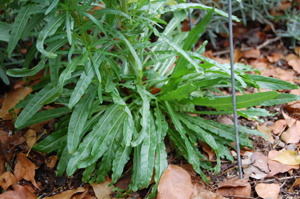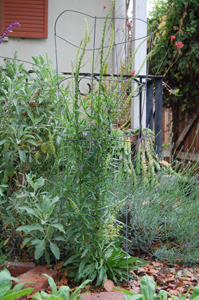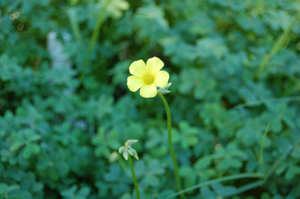
(before and after)

Cotton samples, 50% and 25% DRIED plant to fiber, and then on the far right extra samples tossed into the 50% and 25% dye soup to exhaust the dye. The extra samples (in order) were wool, soy silk and cotton.
So far my most successful cotton processing has been derived from Jill Goodwin’s “A Dyer’s Manual” – a book both beautiful and useful.
Jill Goodwin method: soak the cotton at least an hour (overnight in this case); “mordant 8 oz of cotton, dissolve 2 oz of alum (60 grams) and half an oz (4 tsp or 20 ml) of washing soda in a pot of boiling water” – ok ounces make my head ache, I use metric for dye work so I calculated this to alum 25% (.25 x weight of fiber) and washing soda 6% (.06 x weight of fiber); boil cotton in alum and washing soda for half an hour, stir occasionally.
I simmered the dried oxalis (contained in a pantyhose foot) and the cotton for about an hour and cooled overnight, around 24 hours.
Goodwin suggests that you use 2x the weight of the material to be dyed. however I have found that dried dye material is quite a bit stronger (concentrated?) then fresh. The color on the photo I have posted here is definately not perfect but gives a general idea of the color. The fiber is darker in the dye liquid but even after the washout I had a decent medium and deep yellow. I plan to try a 10% for a lighter yellow.
The surprise was the amount of color left in the dye liquid that was picked up by the wool, soy silk and 2nd cotton samples. The light yellow samples I will probably over dye with indigo.


















